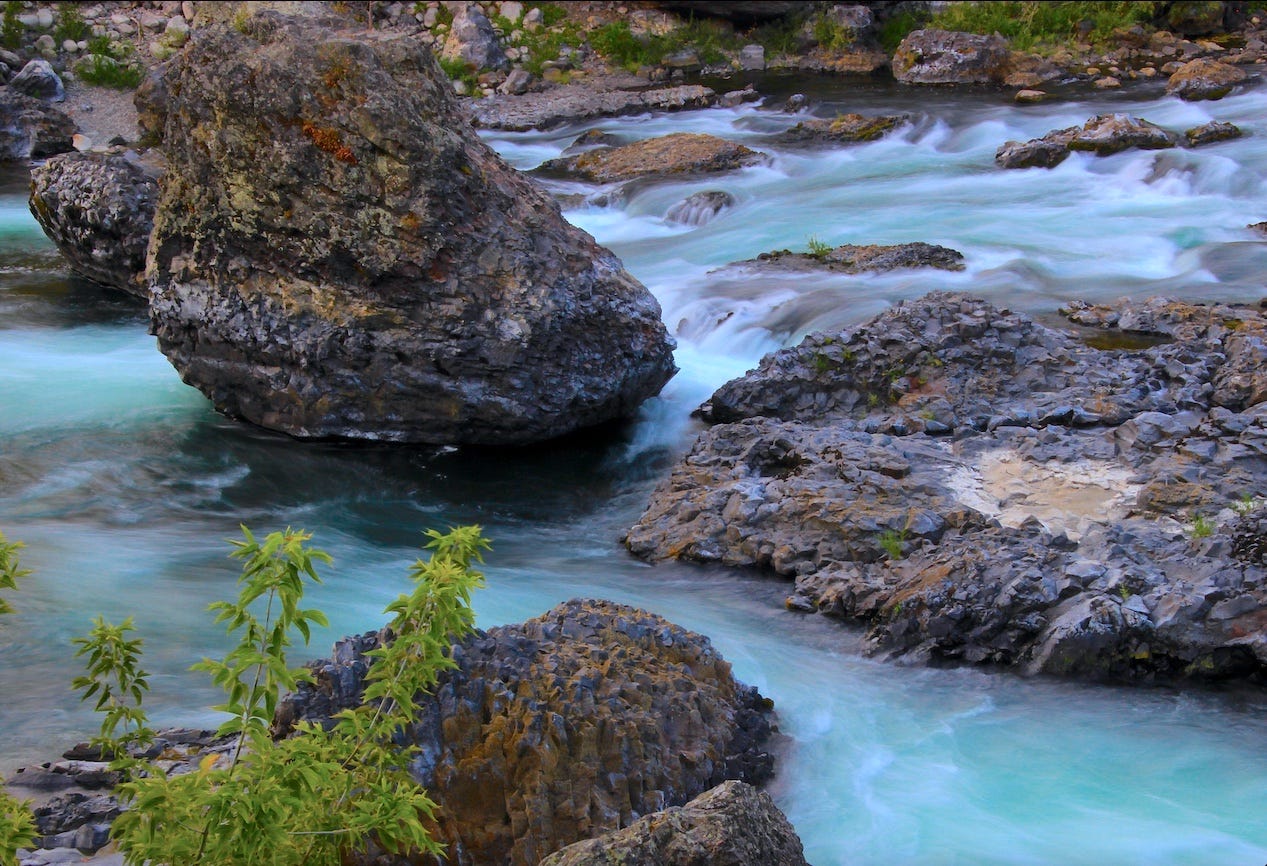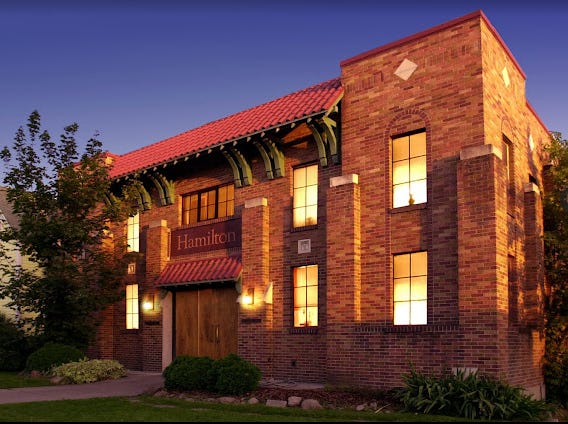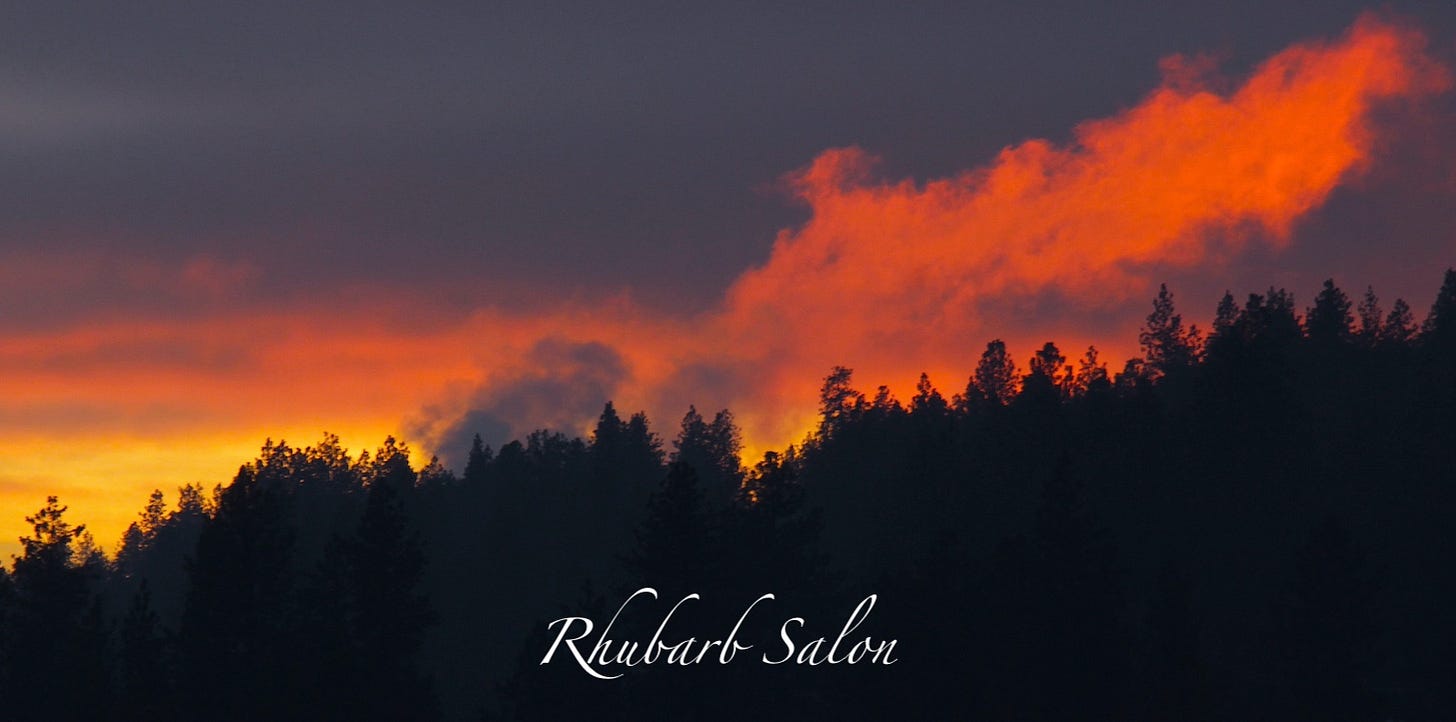Friday's postcard, and An Invitation to a Live Presentation of "The Preposterous Spokane Flood"
January 26, 2024
“Currents of Jade” — Spokane River in west Spokane
The Preposterous Spokane Flood
Today’s Daily Rhubarb is an invitation to join me a week from today at Hamilton Studio (1427 W. Dean Avenue) near the County Courthouse in central Spokane for a multi-media presentation, The Preposterous Spokane Flood. Admission is free and in the spirit of the Hamilton crew and First Friday we’ll have refreshments and tables available, plus a gallery of my photographic work from the regional landscape shaped by the great floods at the end of the last ice age. The photography is available for purchase and I’ll also have copies of my Beautiful Wounds book about my photographic sojourn (2014—2022) into the scablands.
Here’s the link to the Hamilton Studio’s video promo for the event (I love the piano music).
The doors open at 6 p.m. and at 7 p.m. I’ll clear my throat, introduce myself and start the presentation. (And just be clear, this will be next Friday night, not this evening).
The Tweak
If I may say so, the Beautiful Wounds slide and video package I put together for my book events was pretty good, especially when all the equipment worked. But if you know Don Hamilton (and if you listen to Spokane Public Radio, you likely know his voice) you know he bristles with energy and creativity on how to make things even better. Don’s encouragement coincided with a bunch of new research (thanks to Dean Kiefer, Richard Sola, and CWU’s Nick Zentner, among others) about what really happened in Spokane a century ago. It’s been known, for quite a while, that the legendary work of geologist J Harlen Bretz—to meticulously document the scale and cause of the great Ice Age floods—took place in the summers of 1922 and 1923, as Bretz set up headquarters in Spokane and worked with a crew of his students from the University of Chicago to explore and map the scablands.
Yet, even among people who live in Spokane and know of the flood story, there’s still a sense that the scabland story begins over the horizon to the southwest. But it’s actually right here, in town. What is now the City of Spokane is part of what I think of as the “nozzle” for the great floods—where the tsunami(s) unleashed by the collapse of the Purcell lobe ice dam near Sandpoint, Idaho, were constricted in the Spokane valley before overflowing and carving the scarred terrain between here and into the Columbia River gorge heading into the Cascades.
That is the story. And it is part of the Bretz legend that it was a profoundly upsetting story to the high priests of the American geology establishment, up to and including W.C. Alden who, at the time, was the head of the U.S. Geological Survey (USGS). Alden and others held fast to “uniformitarianism”—the theory that major changes to the Earth’s surface happened slowly, over millions of years. But, of course, Bretz was insistent that a catastrophic flood was involved, and that it roared through Spokane, hence the name he assigned to it—the “Spokane Flood.”
In short, what we have now—thanks to Kiefer, Sola, Zentner and others—is a richer understanding of how science teachers in Spokane set the stage for Bretz’s expedition and his historic discovery. I think it’s a big deal—that Spokane science teachers were the catalyst for what became one of the great contributions to 20th century earth science. They knew it would be controversial when Bretz published in 1923, and they referred to it—with puckish delight for the fuss it caused—as “the Outrageous Hypothesis.”
Next Friday (2/2) at Hamilton studio I’ll share more of that story and tee up another lush and dramatic flood story I know you’ll appreciate and enjoy.
Photographs of ancient flood cobbles and Spokane River light
Special thanks to Don and Lorna Hamilton, T.J. Fitzgerald, Linny D., Margo and Craig Hill, and Dean Kiefer for their energy and help.
Hope to see you next Friday night at the studio. Bring a friend. You won’t be disappointed.
—tjc
Hamilton Studio













See you next Friday!!